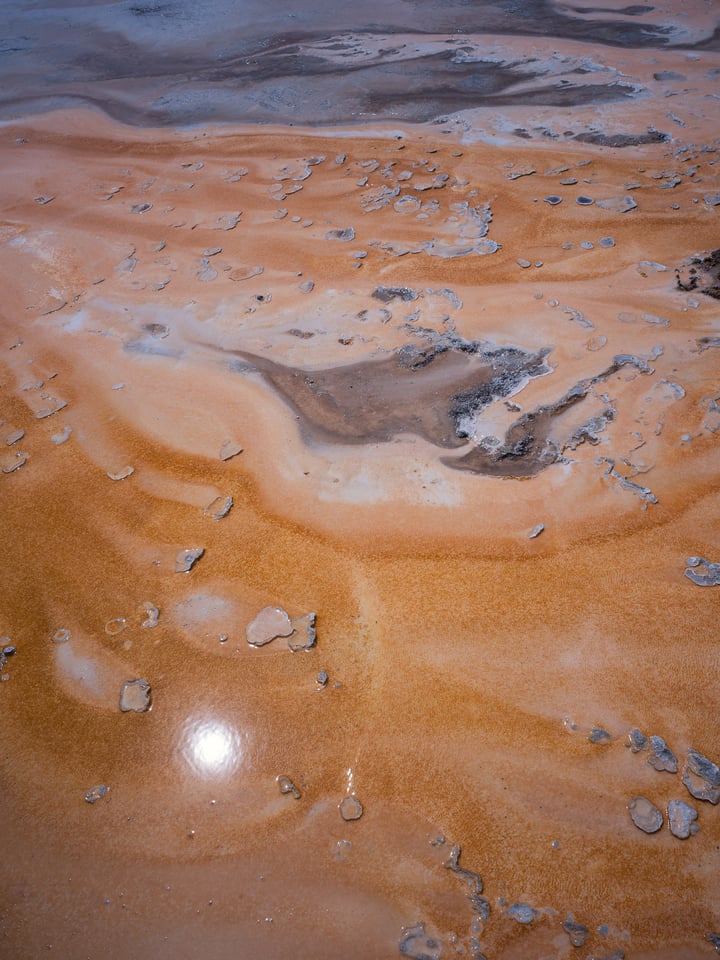ايزو 1600
Hasselblad 907X وCFV 100C @ ISO 1600Fuji GFX 50S @ ISO 1600Nikon Z7 II @ ISO 1600
لا شيء جديد هنا. لا يزال Hasselblad متقدمًا في التفاصيل بشكل كبير (وهذا لن يتغير). تتشابه مستويات الضوضاء إلى حد كبير في جميع الكاميرات الثلاث، على الرغم من أن كاميرا Nikon Z7 II تظل أكثر ضوضاءً قليلاً.
ايزو 3200
Hasselblad 907X وCFV 100C @ ISO 3200Fuji GFX 50S @ ISO 3200Nikon Z7 II @ ISO 3200
نفس القصة العامة، على الرغم من أنني أعتقد أن الفرق بين الكاميرتين ذات التنسيق المتوسط وكاميرات نيكون يتزايد قليلاً.
ISO 1600
 Hasselblad 907X & CFV 100C @ ISO 1600
Hasselblad 907X & CFV 100C @ ISO 1600 Fuji GFX 50S @ ISO 1600
Fuji GFX 50S @ ISO 1600 Nikon Z7 II @ ISO 1600
Nikon Z7 II @ ISO 1600
Nothing new here. The Hasselblad is still ahead in detail significantly (that’s not going to change). Noise levels are pretty similar across all three cameras, though the Nikon Z7 II remains the slightest bit noisier.
ISO 3200
 Hasselblad 907X & CFV 100C @ ISO 3200
Hasselblad 907X & CFV 100C @ ISO 3200 Fuji GFX 50S @ ISO 3200
Fuji GFX 50S @ ISO 3200 Nikon Z7 II @ ISO 3200
Nikon Z7 II @ ISO 3200
Same general story, although I think the difference between the two medium format cameras and the Nikon is growing a little bit.
Hasselblad 907X وCFV 100C @ ISO 1600Fuji GFX 50S @ ISO 1600Nikon Z7 II @ ISO 1600
لا شيء جديد هنا. لا يزال Hasselblad متقدمًا في التفاصيل بشكل كبير (وهذا لن يتغير). تتشابه مستويات الضوضاء إلى حد كبير في جميع الكاميرات الثلاث، على الرغم من أن كاميرا Nikon Z7 II تظل أكثر ضوضاءً قليلاً.
ايزو 3200
Hasselblad 907X وCFV 100C @ ISO 3200Fuji GFX 50S @ ISO 3200Nikon Z7 II @ ISO 3200
نفس القصة العامة، على الرغم من أنني أعتقد أن الفرق بين الكاميرتين ذات التنسيق المتوسط وكاميرات نيكون يتزايد قليلاً.
ISO 1600
 Hasselblad 907X & CFV 100C @ ISO 1600
Hasselblad 907X & CFV 100C @ ISO 1600 Fuji GFX 50S @ ISO 1600
Fuji GFX 50S @ ISO 1600 Nikon Z7 II @ ISO 1600
Nikon Z7 II @ ISO 1600Nothing new here. The Hasselblad is still ahead in detail significantly (that’s not going to change). Noise levels are pretty similar across all three cameras, though the Nikon Z7 II remains the slightest bit noisier.
ISO 3200
 Hasselblad 907X & CFV 100C @ ISO 3200
Hasselblad 907X & CFV 100C @ ISO 3200 Fuji GFX 50S @ ISO 3200
Fuji GFX 50S @ ISO 3200 Nikon Z7 II @ ISO 3200
Nikon Z7 II @ ISO 3200Same general story, although I think the difference between the two medium format cameras and the Nikon is growing a little bit.





























 Rolling shutter makes this slow-moving fan (less than one revolution per second) look completely warped
Rolling shutter makes this slow-moving fan (less than one revolution per second) look completely warped





 لا توجد عدسة الكاميرا الإلكترونية، العديد من الميزات الأصغر الأخرى المفقودة (مثل تقليل ضوضاء التعرض الطويل) عدد قليل نسبيًا من الأزرار أو عناصر التحكم المادية، ما لم يتم استخدام قبضة التحكم المنفصلة، ليس جيدًا - مناسب للتحكم فيه أثناء ارتداء القفازات، على الرغم من أنه مقاوم للعوامل الجوية إلى حد ما، إلا أنه ليس تصميمًا متينًا/محكمًا على نطاق واسع، تكون الشاشة الخلفية متذبذبة عند إمالة التركيز البؤري التلقائي يمكن أن يكون بطيئًا مع بعض العدسات، يتميز الغالق الإلكتروني بسرعة قراءة بطيئة للغاية
لا توجد عدسة الكاميرا الإلكترونية، العديد من الميزات الأصغر الأخرى المفقودة (مثل تقليل ضوضاء التعرض الطويل) عدد قليل نسبيًا من الأزرار أو عناصر التحكم المادية، ما لم يتم استخدام قبضة التحكم المنفصلة، ليس جيدًا - مناسب للتحكم فيه أثناء ارتداء القفازات، على الرغم من أنه مقاوم للعوامل الجوية إلى حد ما، إلا أنه ليس تصميمًا متينًا/محكمًا على نطاق واسع، تكون الشاشة الخلفية متذبذبة عند إمالة التركيز البؤري التلقائي يمكن أن يكون بطيئًا مع بعض العدسات، يتميز الغالق الإلكتروني بسرعة قراءة بطيئة للغاية
تعليق